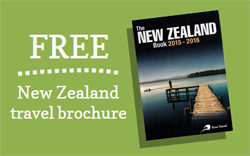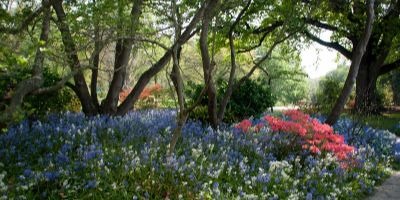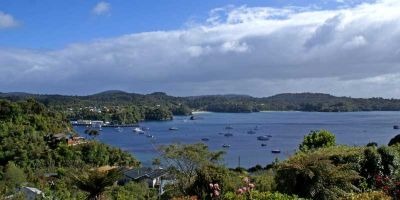The short answer is both! But if you cannot afford the time to take in the sites and sights of both Islands (and Stewart Island for that instance), then we’ve done the hard work and highlighted some of the key features of both Islands. In this article (Part 1 of a two part series), we look at the North Island and what it has to offer.
New ZealandIf you’re not familiar with New Zealand, New Zealand is predominantly made up of three islands (though a number of others do exist off the coast). These being the North Island (or Te Ika-a-Maui as per the native tongue of the indigenous Maori people), the South Island (Te Waipounamu), and Stewart Island (Rakiura).
The majority of Kiwis refer to the major two islands – that being the North and South when describing New Zealand. While there are many similarities in landscape, activities and operations within both Islands, there are some contrasts as well.

The North IslandThe North Island of New Zealand is the most populous, with approximately 3, 450,800 people as at June 2014[1] - about 77% of New Zealand’s population.
Most of the population lies north of the ‘Bombay Hills’, with New Zealand’s largest city, Auckland (the City of Sails) being one of the most diverse city in the world. Situated towards the north of the North Island, cultural diversity underpins Auckland – it is the largest pacific island city in the world. At the southern tip of the North Island lies New Zealand’s Capital city, Wellington – home to the Museum of New Zealand Te Papa Tongarewa, parliament and café culture.
Many early settlers made the North Island home, with New Zealand’s political history beginning in Russell, in the Bay of Islands. With fertile and sprawling farmlands, the North Island is home to a strong agricultural base from which New Zealand was born.
Beauty can be found in both islands, but what sets the North apart from the South, is Maori culture, the numerous beaches (both black and white sand), and the geothermal wonderlands that are focused within the central North Island.
Maori CultureThough Maori have also migrated to the South Island (and contains one of the wealthiest iwi of Ngai Tahu), Maori culture oozes form every pore of the North, and it has been commercialised in a way to provide visitors to New Zealand an experience of the culture – through food, dance, and visiting historic landmarks.
Rotorua is the central scene for Maori experiences. There are three main providers of this type of experience, each similar in offering with their own special twist. To learn more, visit:

BeachesLike the South Island, the North Island is surrounded by a watery border, with multiple beaches found throughout. The vast difference between the Islands is that the Southern beaches are rugged (with the odd exception), where the North Island beaches are picturesque, accessible and offer a variety of activities – from sand duning, to surfing, to kiting, to swimming, to sunbathing to surf casting to deep sea fishing. The possibilities are endless!
Also due to the population in the north, the ability to sustain supporting businesses and beach communities is prevalent, especially in beach towns such as Piha, Whangamata, Raglan, Whitianga, Oakura – all reknowned for their surf.
In the North you are treated with both black iron ore sand on the West, and embayed white beaches on the East. The west is described as more rugged than its eastern counterparts. Beaches can be found throughout – it is possible to drive from the center of the North Island to a beach in a little over three hours.
Though there are numerous beaches available to relax and refresh on, we recommend:
- Piha (Auckland)
- Hot Water Beach (Coromandel)
- And the multiple beaches found on Surf Highway 45 (Taranaki)

Geothermal WonderlandsWith New Zealand straddling an active fault line, the tectonic plates that lie beneath the North Island are in constant motion – one being pushed below the other which generates a significant amount of active subterranean heat and volcanic activity.[2]
 You can watch and experience boiling mud pools, steam billowing from the earth and feel the heat under foot all while taking in the differing techno-colours of different water ways as you navigate the geothermal highway.
You can watch and experience boiling mud pools, steam billowing from the earth and feel the heat under foot all while taking in the differing techno-colours of different water ways as you navigate the geothermal highway.
Most geothermal activity is centred around Rotorua, but it is also important to note that White Island (off the coast of Whakatane) is an active volcano and is often active. A tour of White Island allows you walk within the crater.
One of New Zealand’s most populated walks is also through the geothermal region of the Tongariro Crossing. A walk through New Zealand’s oldest National Park, you’ll venture across this alpine crossing viewing the volcanic peaks of Ngauruhoe, Tongariro and Ruapehu.
If you’re after a more sedate walk through some of the geothermal wonderlands, then Rotorua is the place to head to. You’ll be hit with the smell of Sulphur and some of the more spectacular visions, including geyser eruptions and pools of differing colours within metres of each other. With numerous different geothermal ‘parks to choose from, you are spoilt for choice.
Ready to go Geothermal? We’ll time to check out:
- White Island
- Tongariro Alpine Crossing
- Orakei Korako (The Hidden Valley)
- Whakarewarewa
- Tikitere (Hell’s Gate)
- Waimangu
- Waiotapu

That brings our North Island wrap-up to an end. Though this doesn’t do it justice, it is a taste of what the North has to offer. But don’t take our word for it – experience it for yourself. We’ll be more than happy to help you do this.
In Part 2 of this North v South comparison, we’ll look at the South Island in more depth and review some of the places, characteristics and things that make the South Island memorable and a must for your bucket list.
[1]Jump up^ "Subnational Population Estimates: At 30 June 2014 (provisional)". Statistics New Zealand. 22 October 2014. Retrieved 2 November 2014. For urban areas, "Infoshare; Group: Population Estimates - DPE; Table: Estimated Resident Population for Urban Areas, at 30 June (1996+) (Annual-Jun)". Statistics New Zealand. 22 October 2014. Retrieved 2 November 2014. For Auckland local board areas, "NZ.Stat; Subnational population estimates (TA, CB), by age and sex, at 30 June 2013-14 (2013 boundaries)". Statistics New Zealand. Retrieved 12 July 2015.
[2] http://www.newzealand.com/us/geothermal/






